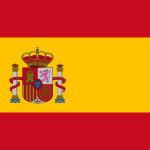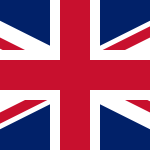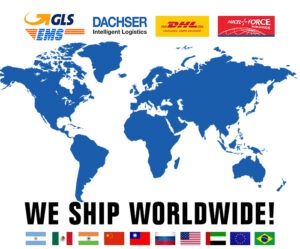
[ad_1]
mountain park — The fillets coming out of Motor City Seafood Co. are sorted, ready to be packaged, shipped and prepared fresh in a Metro Detroit kitchen.
They don't start like that. The Highland Park seafood distributor primarily imports whole fish. Workers fillet them by hand or send them through a system of machines that remove the scales, heads, organs and bones before they are skinned and packaged.
Motor City Seafood is left with packages of carefully trimmed fillets and a big green bucket of the rest: skin, scales, heads and guts.
While unsightly when piled up in the bucket, those remains could be a source for the region's commercial fishing industry.
Great Lakes-St. Lawrence Governors and Premiers, an intergovernmental organization of the Great Lakes states and Canadian provinces, is trying to develop a seafood supply chain beyond the pieces that are fried, baked, roasted and stewed. They said the initiative, 100% Great Lakes Fish, will reduce waste in the commercial fishing industry and create new businesses and jobs.
“There is a tremendous amount of value within each fish, and right now we are only unlocking a small portion, which is the meat,” said John Schmidt, program manager for Great Lakes-St. Governors and Prime Ministers of Lawrence. “But these other pieces of the fish, the bones, the skin, the heads, the eyes, all these different pieces of the fish also contain a lot of potential value.”
Nearly 42 million pounds of fish were caught commercially in the Great Lakes in 2020, according to reports from the Great Lakes Fisheries Commission.

me_Fish Commitment
Great Lakes St. Lawrence governors and premiers discuss materials, leather and other products made from commercial fish harvesting at Motor City Seafood. January 18, 2024, Highland Park, MI.
There are many possibilities for using commercially caught Great Lakes fish from tip to tail, Schmidt said. She demonstrated it by placing a set of products on a conference table at Motor City Seafood Co.
The skin can be tanned into leather that can be sewn into clothing, purses, bandages, or other products. Collagen, a trendy protein and nutritional supplement, can be extracted from fish scales and added to foods, drinks and cosmetics. You could also extract fish oil, another common supplement.
Other options to reduce waste require more of a culinary change than a supply chain one, he said, such as encouraging people to cook with whole fish instead of just fillets and promoting recipes that use less meaty cuts, such as heads and skin.
“There's a lot of value there,” Schmidt said. “At the end of the day, it also reduces waste, which is really important when we think about our ways to protect our region and the fishery as a whole from an ecological and environmental perspective.”
Iceland shows the way
The 100% Great Lakes Fish initiative is modeled after a project in Iceland, the 100% Fish Project, which promotes its successes to the country's commercial fishing industry. The Icelandic initiative states that in the last 30 years, the fishery has greatly increased the use of by-products (such as skin, blood, scales and bones) and has increased the export value of a kilogram of cod by four.
Iceland's effort pioneers the Icelandic Ocean Cluster, an incubator for projects that reduce waste from the fishing industry. The group wants to export its 100% Fish idea and has worked closely with Great Lakes governors and premiers, Schmidt said, helping analyze Great Lakes fish to determine whether it also contains adequate levels of calcium, protein and collagen for its use in other industries. .
Great Lakes-St. Lawrence Governors and Premiers aims to protect the Great Lakes and grow the regional economy. Michigan Governor Gretchen Whitmer is its current president. Schmidt said the 100% Fish team is collaborating with commercial fishing companies, processors, academics and industry groups to refine the initiative and give it more momentum.
There is not much money behind the initiative. Schmidt said the 100% Great Lakes Fish team is generating interest in the idea and trying to identify the most valuable and attainable product options.
“That's when we have recommendations that can be given to state and provincial policymakers on how best to support this,” Schmidt said. “Is any part of a collagen factory being subsidized? I don't really know, but that's the next step.”
Marc Gaden, executive secretary of the Great Lakes Fisheries Commission, said developing a supply chain for more parts of the fish could be good for the Great Lakes. By increasing the value of each individual fish, commercial fishermen and fish processors could increase their profits without having to increase their catches.
“Looking at how the value of an individual fish could be increased is a way to get more value out of the fishery without the lure of, say, fishing in a way that's not sustainable,” Gaden said. “That gives fishery managers incredible tools in their toolbox to take actions that allow for the continued realization of the value of the fishery without having to increase the number of fish that are caught.”
The Great Lakes Fisheries Commission helps coordinate management activities and research among U.S. and Canadian state, provincial and tribal governments, as well as federal agencies.
Great Lakes commercial and sport fishing is highly regulated by those governments, which have formed committees to manage each of the five lakes. Governments negotiate catch levels and collaborate on research, fish stocking programs, law enforcement, and habitat restoration.
Initially, the 100% Great Lakes Fish team planned to focus the effort on whitefish. Catch numbers for the popular and important fish have plummeted, and finding new markets for fish byproducts could ease the financial strain on commercial fishermen and processors.
“It's a big part of the fishery,” Schmidt said. “Stocks have been declining and we need to find some way to provide more economic value to fishermen, processors and others in the fish value chain who are being hurt by this.”
The group of governors and premiers has since expanded the initiative to include all commercially caught Great Lakes fish.
First step: separate the parts of the fish
Motor City Seafood Co. is not exclusively dedicated to Great Lakes fish. The company imports from all over the world. But regardless of where the seafood comes from, the resulting waste remains.
Motor City Seafood scraps are composted by a company that collects them and takes them off-site to be turned into material used on farms. Finding a second home for the fish pieces wasn't easy at first, said co-founder Staci Hayman.
Before moving the company to the 44,000-square-foot facility in Highland Park, it had downsized to 3,000 square feet in Plymouth. Hayman didn't want to throw away the fish parts the company didn't sell to turn into meat, but he couldn't find a composting company that came often enough to keep them from going bad. Motor City Seafood didn't have the freezer space or volume of material to make it work.
“At our previous facility, in order for someone to pick up our waste to compost, we would have had to have freezer space,” Hayman said. “So when someone comes once a week to pick it up, you have to freeze it, otherwise the smells and all that stuff. Now that we're in a much larger facility, we have the space.”
Although not one of the high-value uses identified by the 100% Great Lakes Fish team, composting fish scraps benefits the climate compared to sending those offcuts to a landfill. Organic material releases methane, a powerful greenhouse gas, when placed in landfills and allowed to decompose in an oxygen-depleted environment. Schmidt said about 40% of a fish's biomass is fillet, so the rest could end up discarded unless used for another purpose.
Motor City Seafood was one of the first companies to sign the Great Lakes Governors and Premiers Pledge to 100% Great Lakes Fishing. Companies that sign the pledge promise to proactively use all parts of commercially caught Great Lakes fish, maximize the value derived from that fish, explore investments in new technologies, spread the word, and be open-minded about taking the initiative further. far.
There is additional labor involved in separating fish trimmings for use in other products, Hayman said. It's harder than just putting everything in the same container.
At Motor City Seafood, one of the first steps in meeting the 100% Great Lakes Fish Pledge was to purchase equipment that eliminates some of the work of separating different pieces.
“These are the first simple steps we can take and we are working with the governors and premiers of the Great Lakes,” Hayman said. “They're reaching out to some different industries that we could potentially be working with (that could be) taking these cuts and turning them into a new product, creating new jobs within the Michigan region.”
ckthompson@detroitnews.com
[ad_2]
Source link






